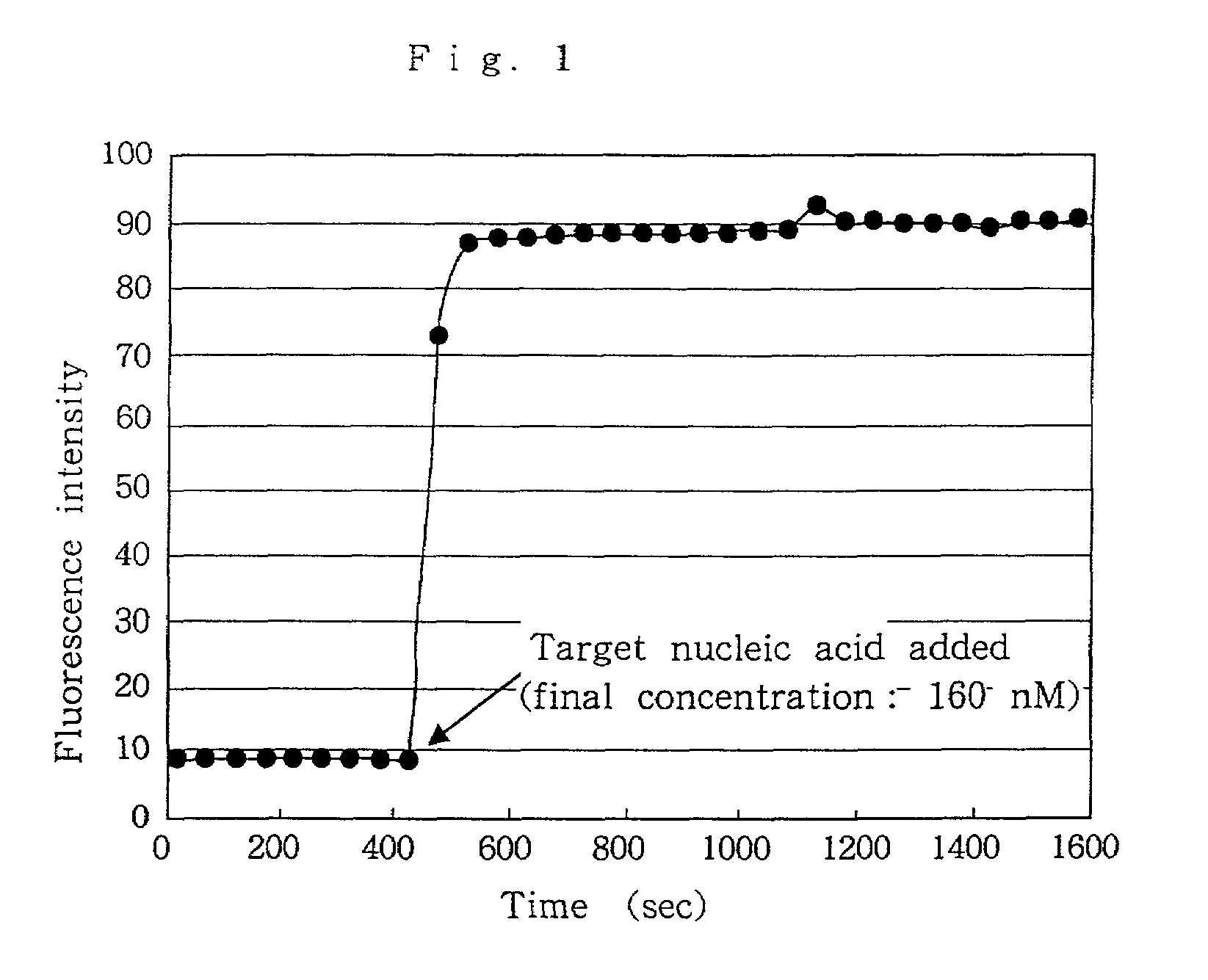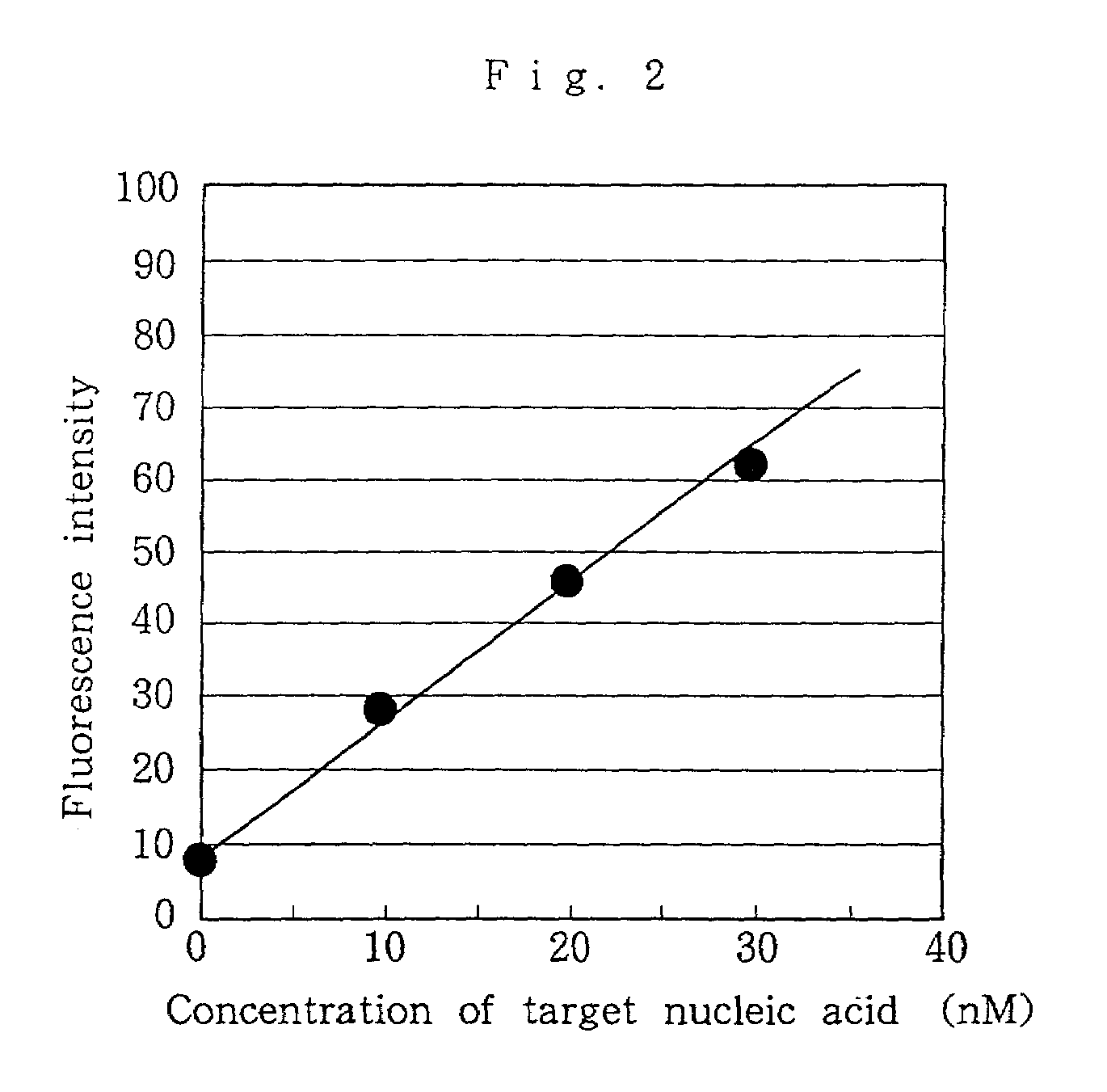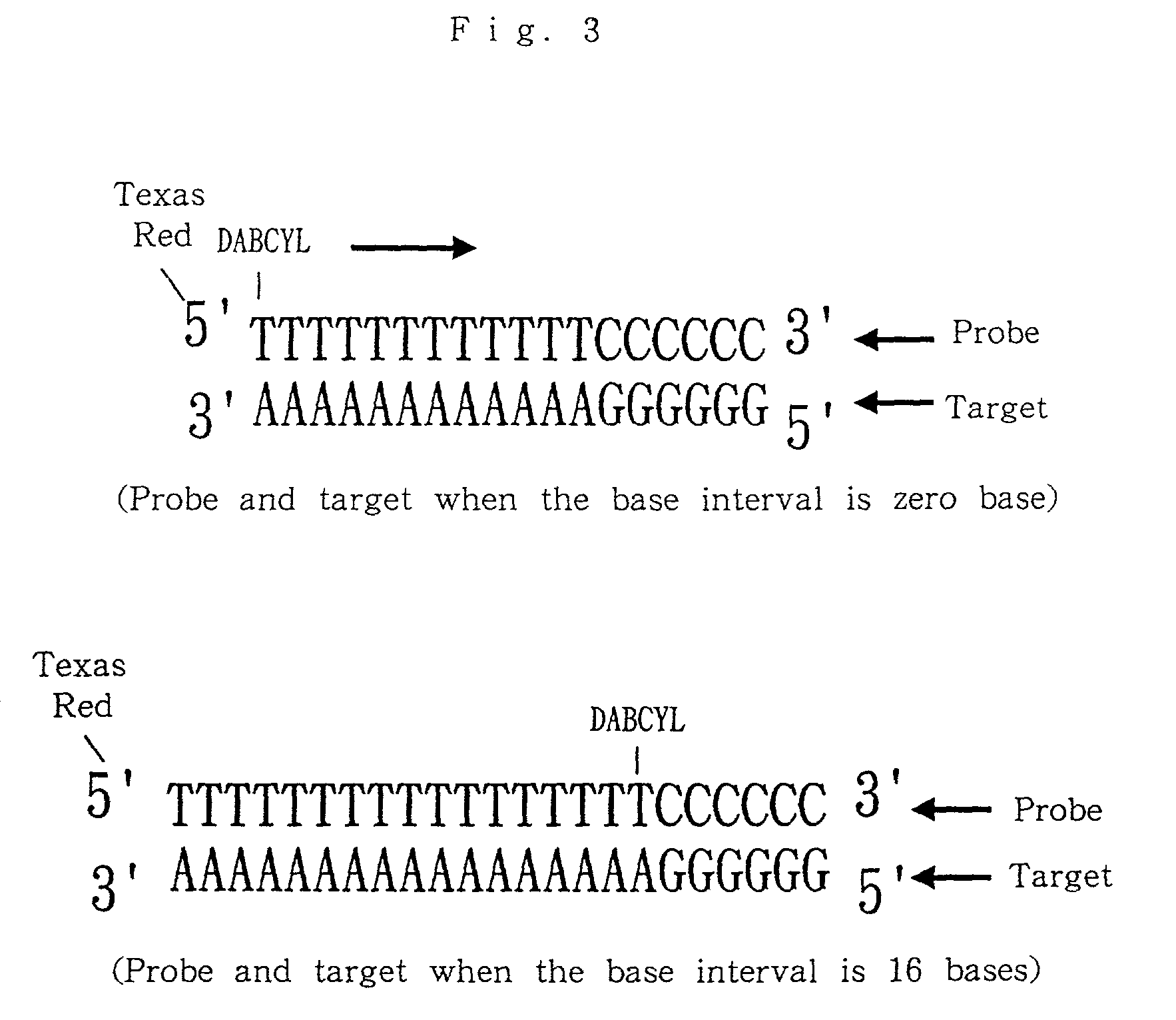Nucleic acid probes, method for determining concentrations of nucleic acid by using the probes, and method for analyzing data obtained by the method
a technology of nucleic acid and probes, which is applied in the field of nucleic acid probes, can solve the problems of having to wash out the hybridized portion of the nucleic acid probe from the reaction system, and achieve the effects of simple measurement, low background of measurement, and short time-consuming
- Summary
- Abstract
- Description
- Claims
- Application Information
AI Technical Summary
Benefits of technology
Problems solved by technology
Method used
Image
Examples
example 1
Synthesis of Nucleic Acid Probe
[0441]Assuming that the base sequence of a target nucleic acid was (5′)GGGGGGAAAAAAAAA(3′) (SEQ ID NO: 1) formed of an oligodeoxy-ribonucleotide, synthesis of a nucleic acid probe according to the present invention was conducted in the following order.
Designing of Nucleic Acid Probe
[0442]As the base sequence of the target nucleic acid was (5′)GGGGGGAAAAAAAAA(3′) (SEQ ID NO: 1), it was possible to readily design the base sequence of the nucleic acid probe as (5′)TTTTTTTTTCCCCCC(3′) (SEQ ID NO: 48) formed of an oligodeoxyribonucleotide. The nucleic acid probe according to the present invention was designed further as will be described hereinafter. It was decided to label a fluorescent dye, Texas Red, to a phosphate group on the 5′ end and a quencher substance, Dabcyl, to an OH group on the 6-C of a base ring of the 6th thymine from the 5′ end (Design of Texas Red-(5′)TTTTTT(Dabcyl-)TTTCCCCCC(3′)) (SEQ ID NO: 48).
[0443]Using “5′Amino-Modifier C6 Kit” (tra...
example 2
Synthesis of Target Nucleic Acid
[0458]An oligonucleotide the base sequence of which was (5′)GGGGGGAAAAAAAAA(3′) (SEQ ID NO: 1) was synthesized in a similar manner as in the synthesis of the above-described oligonucleotide, and provided as a target nucleic acid to which the present invention is applicable.
example 3
Measurement of the Intensity of Fluorescence from a Reaction System in which a Probe According to the Present Invention had been Hybridized with the Target Nucleic Acid
[0459]Buffer (2 M NaCl, 200 mM Tris-HCl; pH 7.2) (500 μL) was added to a quartz cell (10 mm×10 mm) (capacity: 4 mL), followed by the addition of sterilized distilled water (1460 μL). The resulting mixture was then stirred. While maintaining the mixture at 35° C., the intensity of fluorescence was measured in the course of time [exciting wavelength: 581 nm (8 nm wide); wavelength of measuring fluorescence: 603 nm (8 nm wide)]. A target nucleic acid solution the concentration of which was 160 nM (32.0 μL) was then added, followed by stirring. The intensity of fluorescence was measured in the course of time under the same conditions as described above. The results are diagrammatically shown in FIG. 1. It is understood from the diagram that the addition of a target nucleic acid leads to an increase in the intensity of flu...
PUM
| Property | Measurement | Unit |
|---|---|---|
| Magnetic field | aaaaa | aaaaa |
| Temperature | aaaaa | aaaaa |
| Molar density | aaaaa | aaaaa |
Abstract
Description
Claims
Application Information
 Login to View More
Login to View More - R&D
- Intellectual Property
- Life Sciences
- Materials
- Tech Scout
- Unparalleled Data Quality
- Higher Quality Content
- 60% Fewer Hallucinations
Browse by: Latest US Patents, China's latest patents, Technical Efficacy Thesaurus, Application Domain, Technology Topic, Popular Technical Reports.
© 2025 PatSnap. All rights reserved.Legal|Privacy policy|Modern Slavery Act Transparency Statement|Sitemap|About US| Contact US: help@patsnap.com



